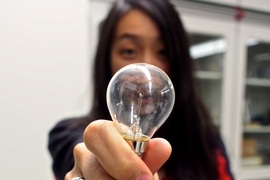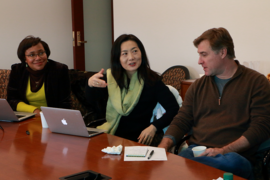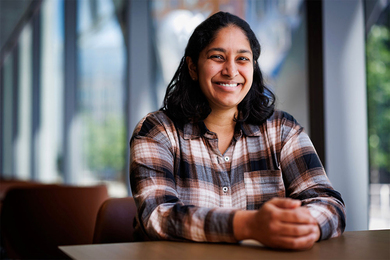This month, the MIT-Russia Program is kicking off a series of programs to bring Russian culture and language to MIT.
The festivities begin today with a reception for the newly opened "Architecture at the End of the Earth," an exhibit of William Craft Brumfield’s photographs of architecture and nature in the Russian North. The exhibit, sponsored by MIT’s School of Architecture and Planning (SA+P), is on display now through Jan. 13, 2017, at the Wolk Gallery (Room 7-338).
Elizabeth Wood, professor of history at MIT and faculty director of the MIT-Russia Program, explains that Brumfield’s collection — which comprises 40 years’ worth of photographs — has “captured a legacy” and preserved some of Russia’s aesthetic history. “There are buildings he photographed — wooden mills, homes, and churches — that are no longer standing,” Wood shares. “We only have the photos.” Wood and Brumfield will open today's reception with a discussion about the history, architectural legacy, and culture of the Russian North.
"Architecture at the End of the Earth" is just one example of Russian culture coming to MIT this academic year. With a little luck, what started as a conversation 11 years ago between Brumfield and Gary Van Zante, the Wolk Gallery director who met Brumfield when they both worked at Tulane University, evolved into a four-month series including the art exhibition and various related events. “It’s a story of collaboration and coincidence,” says Wood, who met Brumfield by chance and was then introduced through him to Van Zante.
When the time came to plan the exhibit, MIT Museum curatorial associate Ulrike Heine and Van Zante gave Wood a call. Together, Heine and Wood — along with Maria Khotimsky, a Russian language teacher at MIT, and Ekaterina Zabrovskaya, the MIT-Russia Program manager — brainstormed a series of events around the exhibit. Finally, after various discussions with departments around campus, the duo was able to organize three lectures and a film screening in collaboration with MIT Global Studies and Languages (GSL), the Center for International Studies (CIS) and MIT History. “I see this event series as a way of putting Russian Studies on the map,” Wood says.
Over the past four decades, Brumfield has traveled extensively in Russia, documenting and photographing the country’s diverse architecture. What began as a sporadic endeavor evolved into a multi-decade archiving project, which has been recognized in the United States and Russia for its historical as well as artistic accomplishments. "Architecture at the End of the Earth: William Craft Brumfield’s Photographs of the Russian North" can be seen Monday through Friday 9 a.m. to 5 p.m. through Jan. 13, 2017. Special events also at the Wolk Gallery (Room 7-338) during the exhibit include a photographer’s talk on Sept. 14 with William Craft Brumfield and Elizabeth Wood; a gallery talk, in Russian, on Nov. 30 with Nikolay Malinin; and a curator's talk on Dec. 17 with Ulrike Heine.
Additional events related to the exhibition include:
- Starr Forum: "The Warming Arctic: Site of a New 'Cold War?'" co-sponsored with the Center for International Studies — Sept. 29 at 4:30 p.m., Room 4-270
- Film Night: "Leviathan" — Oct. 6 at 5 p.m., Room 4-370
- Lecture: "Visualizing Early Russia" with Valerie Kivelson of the University of Michigan — Oct. 27 at 5 p.m., Room 4-270
- Lecture: "The Blessed and the Damned: The Solovetsky Islands from Monastery to Gulag" with Roy Robson of Penn State Abington — Nov. 9 at 5:30 p.m., Room 7-429
MIT-Russia, a part of the MIT International Science and Technology Initiatives (MISTI), offers internship, research, and teaching opportunities to MIT undergrads and graduate students. “I want MIT-Russia to be the driver of Russian Studies at MIT,” Wood asserts, explaining that students in this track are required to take at least one year of college-level Russian language, which is now officially offered by GSL. MIT-Russia students are also required to participate in a series of prep and training modules prepared by the program covering topics such as cross-cultural communication, current events, technology and history.
Since its inception in 2011, the MIT-Russia Program has sent more than 70 students to intern at leading Russian companies and labs and to teach science, technology, engineering, and mathematics courses at Russian universities. This academic year the program is also offering internship and teaching placements in Kazakhstan and a Global Startup Labs (MIT-GSL) program in Mongolia.
MISTI, MIT’s flagship international education program, is a program in CIS within the MIT School of Humanities, Arts, and Social Sciences.









